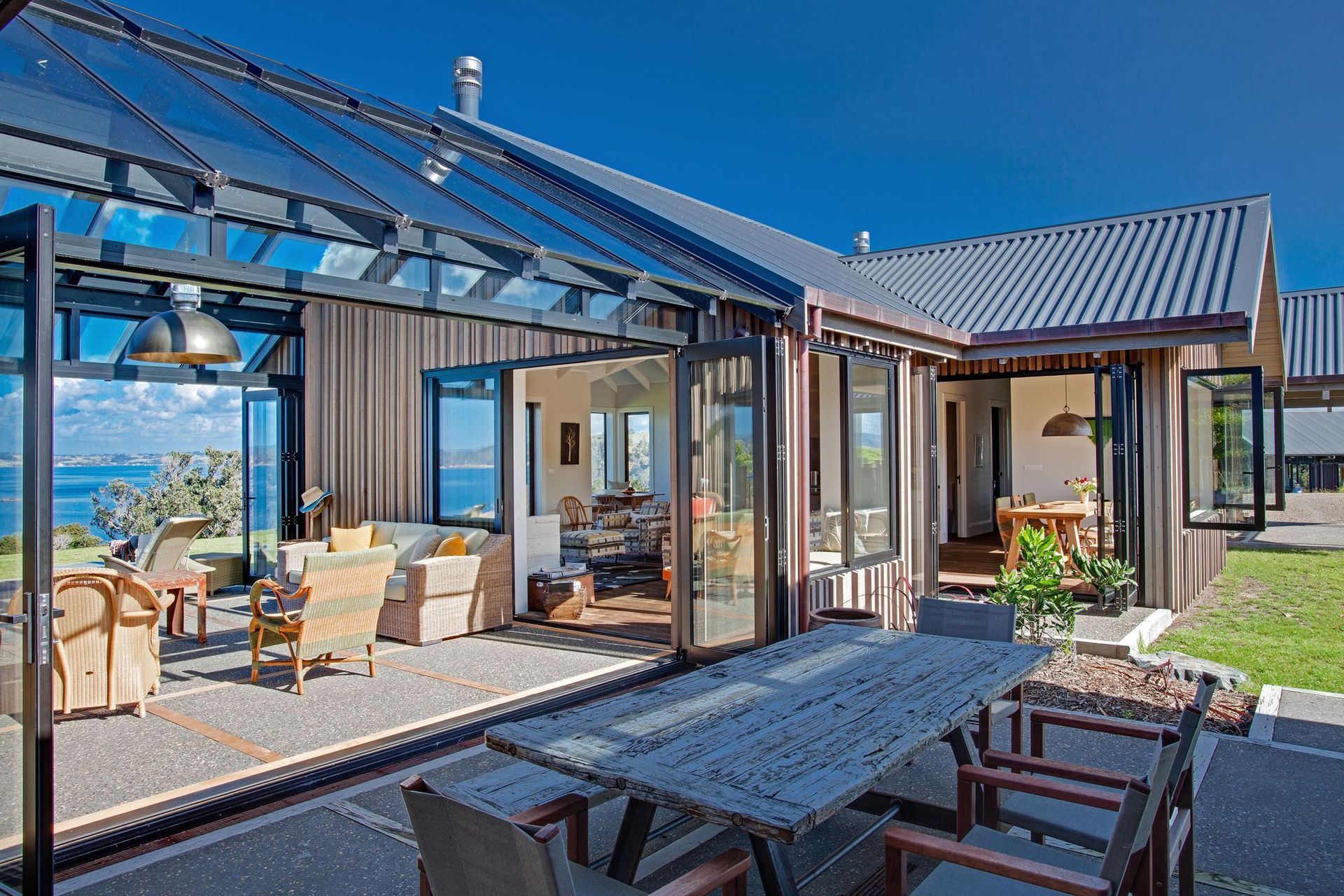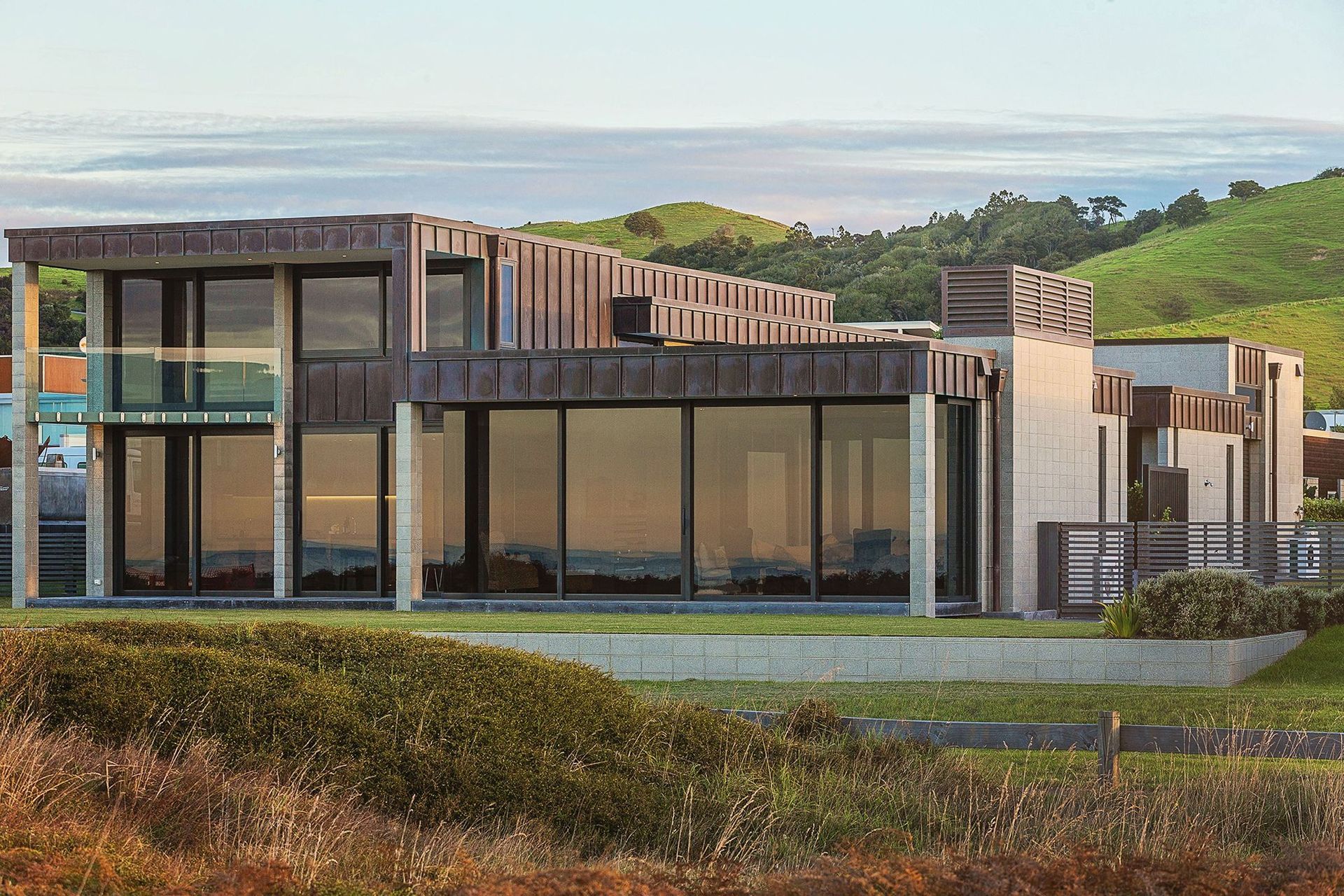Coastal challenges
Written by
28 November 2018
•
4 min read

New Zealand’s incredible coastlines are ideal for living and holidaying beside the sea. Designing for this environment also has its challenges: strong ocean breezes, the eroding capabilities of salt, rising sea levels and more.
ArchiPro talked to Grant Neill of Pacific Environments NZ Ltd Architects about what to consider when building or buying your dream coastal home.
Suitable materials
Sustainably-sourced cedar cladding works well in harsh coastal environment because it is durable and very low maintenance, apart from soft cleaning every couple of years. It can be left unstained to give a relaxed, contextual appeal.
Pre-coated claddings and aluminium joinery often need specific supplier advice to ensure that warrantees are valid on the coast. In terms of maintenance, these products will need washing in accordance with the warrantees. If the house is within 400 metres of the ocean, the Building Code requires all fixings to be stainless steel.
Cementious materials like concrete can be sealed; however, this is a specialist job. Painted surfaces and sealed concrete block will need recoating more often than in sheltered urban areas, while brick or unsealed block can have issues with discolouration from windborne salt, suggests Grant. “And, if you have a ‘flat’ roof and collect rainwater for drinking, make sure the rubber or bituminous roof material is certified for potable water, as not all of them are.”
Protection from the elements
The local microclimate, which changes significantly through the seasons, needs to be considered when you buy or build a coastal home. In mid-winter, what appears to be a sheltered, east-facing site looking over the ocean can have a 20-knot sea breeze pumping in from the east on hot summer afternoons, which can make the seaward side unusable.
Grant recommends quality outdoor areas that open out on both sides of the living space for protection depending on the direction of the wind. Good glazing in the living room means that you can enjoy the view from the courtyard, and shade in your outdoor spaces is also essential.
Climate change challenges
With weather events becoming more extreme and increasing coastal inundation, the simple answer is to not build in potentially affected areas. If you do, Grant suggests choosing an elevated part of the site, if possible, and to oversize gutters and downpipes to cope with increasing rainfall.
A tropical cyclone has strong winds that can deliver heavy rain deep into claddings and the building structure, so well-thought-out flashings and cladding cavity systems are a must.
“Additionally, consider the location of a buried water tank. In mid-summer, an empty tank may not fill up as fast as the ground water rising around it and, if the rainfall is torrential, it may pop out of the ground, so don’t put it under a low deck!”
Protecting our environment
The coast is a precious and finite environment that should be celebrated and protected, so ensure silt from earthworks or chemical runoff from exposed aggregate driveway construction doesn’t run into waterways or into the sea. It’s also important to ensure septic tank systems are well maintained.
If your site has magnificent pohutukawas or cabbage trees, don’t cut them down; instead, build around them with the advice of an arborist to ensure root systems are protected.
Grant believes that we need to design for coastal zones with a sensitive use of contextual materials, colours and textures. “Deep eaves can make a house more comfortable to live in during summer, while also ensuring it visually recedes into the wider landscape – especially when seen from a distance.”
Relaxed living
Even if a coastal home is not a bach or a holiday retreat, it’s important to make it feel more relaxed, with a layout that reflects the beachy lifestyle.
“Urban homes are very structured in their planning to suit cultural protocols, procedure and security. With coastal homes, the front door is often unused and neighbours and friends can wander up from the beach looking for a yarn, a feed or a drink,” Grant explains.
“While spatial legibility is still important, some of my most successful designs are very relaxed in their plan; for example, the use of linked sprawling pavilions are reminiscent of a few tents pitched around a campsite.”
This unpretentious approach also creates varied outdoor spaces and wind shelters, and reduces the visual scale of the building by breaking it up. Finally, Grant says, don’t forget space for the boat!
Words by ArchiPro editor Amelia Melbourne-Hayward.


